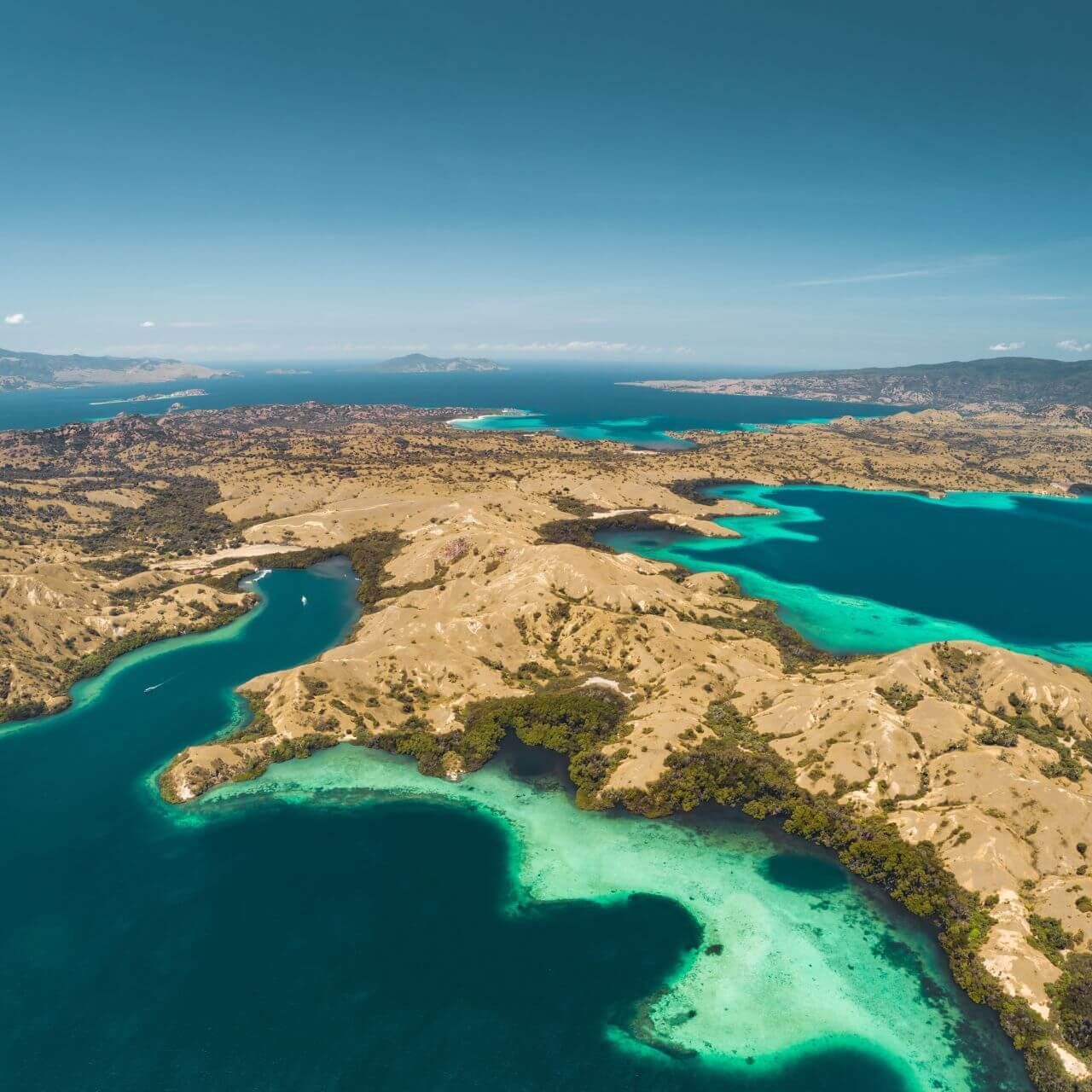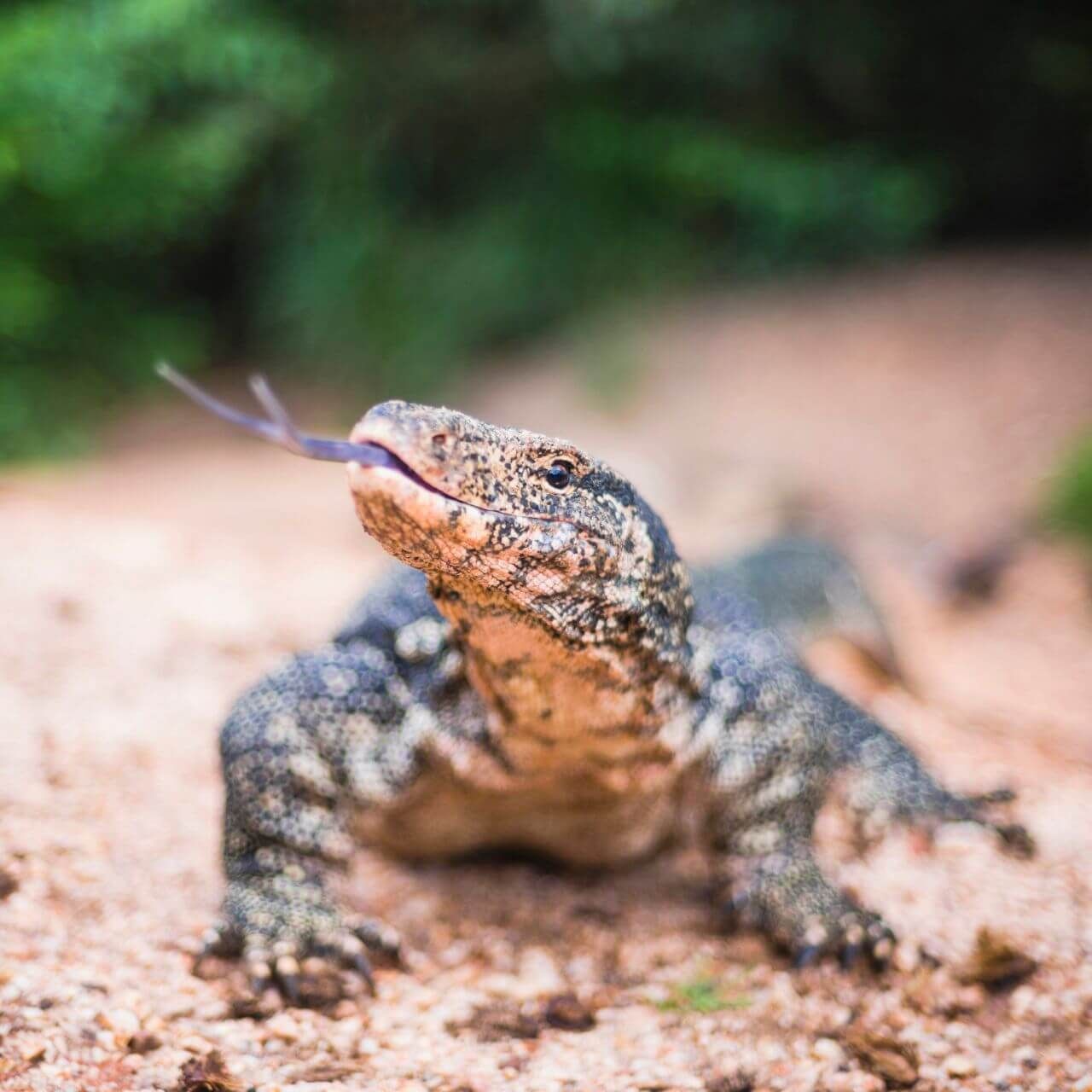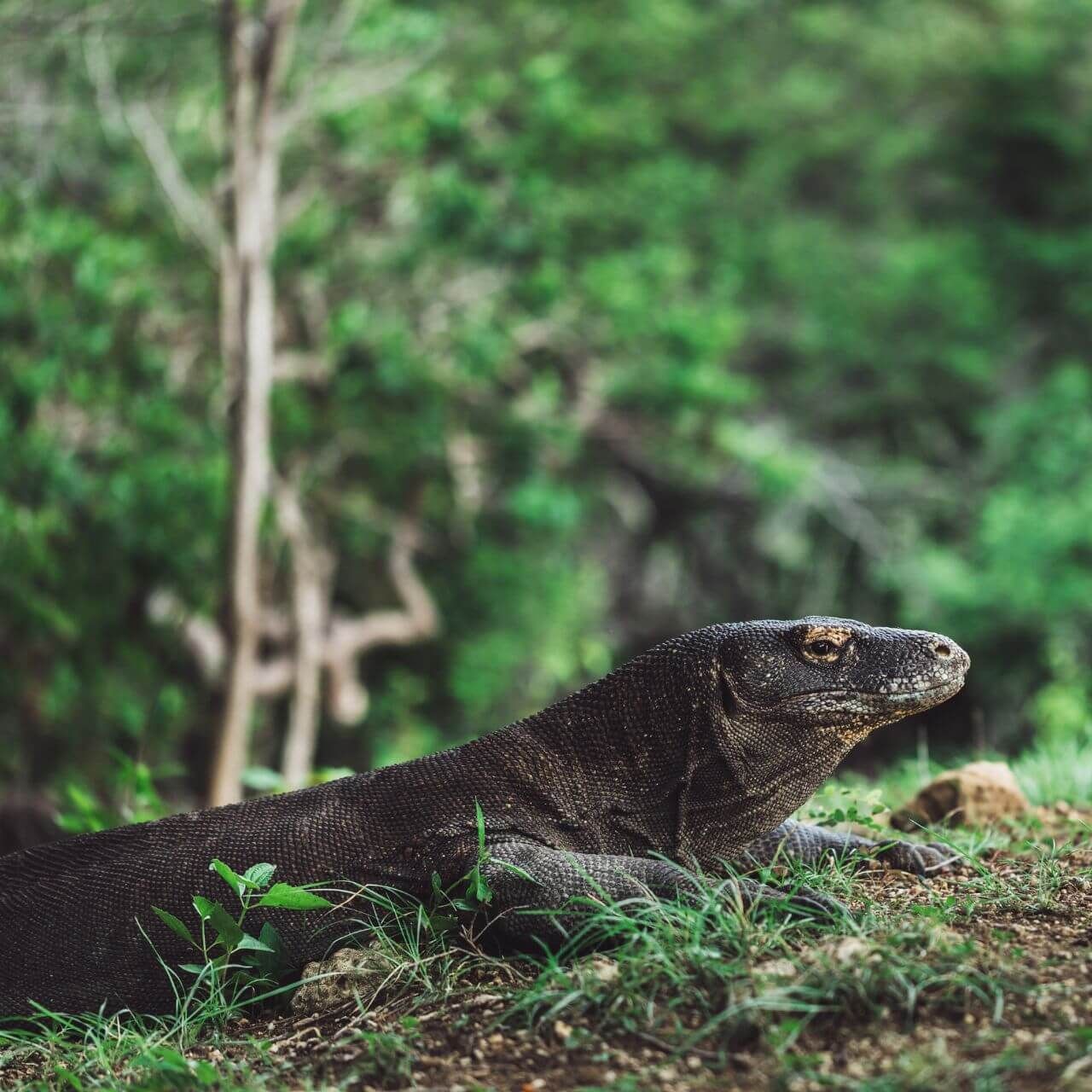Komodo Dragons
And Other Monitor Lizards

Let's Learn About Komodo Dragons
Word of the Week
Venom
Venom is a toxin that is injected. Venom can be injected by fangs (like in a rattlesnake), a stinger (like in a bee), or a spur (like a platypus)! Venom is typically used to catch prey or protect against predators.
Komodo dragons inject a toxin that seeps from their gums using their teeth.
Fast Facts

Where do Komodo dragons live?
Komodo dragons live on 5 small islands off the coast of Southeast Asia, while other monitor lizards can be found throughout Africa, Asia, and Australia and on many islands between Asia and Australia.
On their islands, Komodo dragons inhabit savanna forests and areas with tall grasses. They can also be found along beaches and riverbeds. Young Komodo dragons also spend time in the trees!
What do Komodo dragons eat?
Komodo dragons, like most monitor lizards, are carnivores.
Depending on the species, monitor lizards can feed on everything from insects to fish to small mammals. Komodo dragons eat large amounts of carrion (dead meat), but also hunt animals like deer, goats, wild boar, water buffalo, and even other Komodo dragons.


What do Komodo dragons share with other monitors?
Komodo dragons are very closely related to other monitor lizards, so they have a lot in common!
- Monitor lizards are carnivores.
- Like snakes, monitor lizards smell with their tongue.
- They have long, powerful tails.
- Monitor lizards are territorial.
- Monitor lizards lay eggs.
How many Komodo dragons are there?
Scientists estimate there are about 3,500 Komodo dragons in the wild with about 1,400 of them being adults. They are classified as endangered by the IUCN.
There are roughly 80 species of monitor lizards in the world. Most are not threatened with extinction!

Species Spotlight
Komodo Dragon
Varanus komodoensis
Weighing about 150 lbs on average, the Komodo dragons are the world's largest lizard, but that's not the only thing that makes them unique. Komodo dragons can only be found on few small islands off the coast of Southeast Asia. They live in savanna and forest habitats where they have a healthy prey base of water buffalo, pigs, deer, dead animals, and even other Komodo dragons. Like most monitor lizards, Komodo dragons are carnivores, and they have a secret weapon--venom.
There is debate among scientists about whether or not the Komodo dragon is truly venomous. Some scientists state that all monitor lizards are venomous while others claim that none of them are! What we do know is they have gland that product a toxin that seeps out between their teeth. When they bite into their prey, the venom seeps in and slowly takes affect. Larger prey may take several days to die after being bit, so Komodo dragons stalk their prey using their forked, snake-like tongue to smell them. Many Komodo dragons will often fight for meals with the more dominant Komodo dragon eating first. They can eat 80% of their body weight in one meal!
Conservation Corner
The Importance of National Parks
While Komodo dragons can be found on several islands, most are found on the islands of Komodo, Rinca, and Pada where they live in the safety of Komodo National Park. The park was established in 1980 with the main objective of protecting the Komodo dragon. Today, the park not only offers a safe home to Komodo dragons, but to many other native species both on land and in the ocean. Komodo National Park is recognized as a World Heritage Site and a Man and Biosphere Reserve, both of which signal the Park's importance.
The other two islands Komodo dragons inhabit, Flores and Gili Motang, are not part of Komodo National Park. The Komodo dragon populations on these islands are small and threated by habitat loss, illegal hunting, and invasive species. Without the rules and regulations enforced within the Park, it is hard to predict what the future will hold for these Komodo dragons.
National parks play a very important role in wildlife conservation. When rules are enforced, national parks offer a safe haven to wild animals where they are protected from poaching and harmful human activity. National parks create a place where nature can flourish without people getting in the way. The best way to support national parks is by visiting them, respecting their rules and regulations, and making donations.
Komodo Conundrum
Finish each sentence by dragging the correct word to its place.
Komodo Dragon Challenge
Let's explore a Komodo dragon's adaptations!
Beginner
Design a Komodo dragon. Don't forget to include all of the adaptations that help it survive. Then, discuss how these adaptations benefit Komodo dragons.
Expert
Design a Komodo dragon. Don't forget to include all of the adaptations that help it survive. Then, complete the worksheet to describe how each adaptation benefits Komodo dragons.
Learn More!
Glossary
Adaptation
The process by which a species becomes more fit for its environment over the course of several generations. It is a result of natural selection.
Apex Predator
The animal at the top of its food chain; it has no natural predators.
Aquatic
Living in water.
Camouflage
The ability for an organism to blend into their surroundings usually to hide from prey or predators.
Carnivore
An animal that primarily eats meat.
Ectotherm
An animal that relies on the outside temperature to regulate their body temperature (reptiles and amphibians). Also known as cold-blooded.
Endotherm
An animal that regulates their body temperature internally (mammals and birds). Also known as warm-blooded.
Poison
A toxin that is harmful when touched or eaten and is often produced through glands.
Predator
An animal that hunts other animals for food.
Prey
An animal that is hunted and eaten by another animal.
Reptile
A group of ectothermic (cold-blooded) vertebrates that are covered in scales and generally lay eggs.
Species
A closely related group of animals with similar characteristics that are capable of reproducing (example: tigers).
Venom
A toxin that is injected into prey through teeth or a stinger.
Vertebrate
An animal that has a backbone.
Sign Up for our Newsletter
Stay up to date with new adventures, live classes, deals, and more!

Helpful Resources
*Please note we do not offer refunds for EdZOOcating Adventures memberships. We recommend you explore the 3-day free trial prior to subscribing!*




